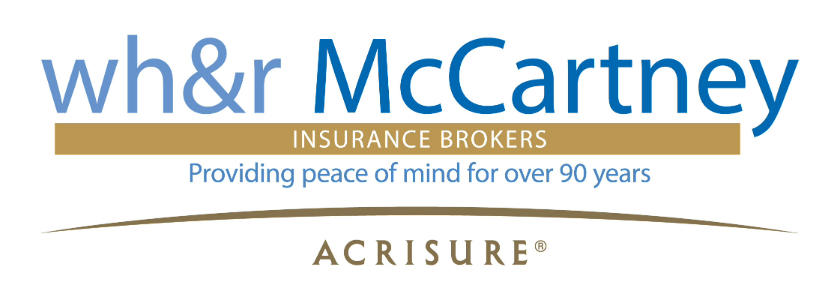Guidance on how to manage unhappy employees
At this strange time we are living through, many employers are considering how they will bring back their employees from a period of furlough leave or a return to the workplace after a lengthy period of home working. Telephone conversations with the employee may have raised a distinct lack of enthusiasm to return with the allure and comfort of the “stay home” message still resonating in their minds.
 You may agree that employers have been required to adapt quickly and make rapid decisions throughout this pandemic, updating procedures and putting in place new methods of working, to ensure they can do everything possible to keep their businesses going and keep practices in line with the current government guidelines.
You may agree that employers have been required to adapt quickly and make rapid decisions throughout this pandemic, updating procedures and putting in place new methods of working, to ensure they can do everything possible to keep their businesses going and keep practices in line with the current government guidelines.The counsel for patience and careful consideration applies now more than ever. Many employees are genuinely anxious. They have a reasonable belief that there is a serious and imminent risk to their health and safety. These situations are often frustrating for you as the employer, particularly if you have taken time to come to your own conclusion that it is safe and time to get employees back.
So before returning employees to work, you as the employer should take the time to consider every option available with a view of being able to talk to the employees as to why what has been provisionally chosen is, in your view, the right course. This will help show the employees that you have considered the return to work programme and their position beforehand. Some employees have been in a position to carry on with ‘business as usual’ whilst working remotely; however, some other employees have had serious disruption, with disruption to the employer business meaning that most staff have been on furlough leave during the past few months. Full consideration must be given to all aspects of the return to work plan and so you have considered it before you propose it to others and before others give it a critical appraisal and find the weaknesses.
The important consideration for you as the employer is the wellbeing, safety and health of all your employees who are being considered for returning to work at your employer premises. This consideration will include the completion of risk assessments and the rearranging of the work space to ensure that social distancing can be implemented.
When you have given consideration to all the options and completed the risk assessments, you can then meaningfully engage with the employees, remembering that you need to encourage them and take them on the journey to appreciate that the workplace is now safe. You can give them guidance on what to expect on their return and the measures you are taking to protect them. This patient approach will help reassure them ahead of a return to the work premises.
How to deal with an unhappy employee
The myriad of health/shielding risks, safety at work and childcare arguments mean that it is a very difficult time to manage employees, especially if they are working remotely or returning from a period of furlough leave. It is very difficult to discern between the genuine anxieties of one employee and the swinging with the lead of another. As the employer, you need to work to communicate with the employee carefully and approach the situation with patience for the employee to catch up with your outlook and plans for a safe return.
1. Try to communicate with employees at least once a week for an informal catch up outside of formal meetings and team discussions.
Discuss any concerns an employee has, listen to the employee and come up with an action plan. This helps an employee to feel like you are listening to them and are positively taking steps to tackle a particular issue. Create a good forum for an employee to be open and express themselves candidly, this may stop a problem from escalating as an employee can discuss their feelings and unhappiness with you in this setting before their approach becomes an issue. It is now more important than ever, to ensure that employee communications are frequent, especially with employees who are working remotely and who may be struggling with their temporary working arrangements. Many employees have pressures on them and many employees may look to work colleagues and managers for someone to talk with.
2. Stay professional
It is important to remain calm and professional when discussing issues relating to an employee. This helps to contain the matter and prevents the situation from escalating or becoming a grievance about you. Usually an unhappy employee’s actions are out of their frustration of a particular situation rather than towards you individually. Be supportive and sympathise with the employee and so you are in the best position to work with them to move forward.
3. Engage in dialogue and be positive in your communications
It is important to engage in meaningful discussions with employees when they are being open and discussing their concerns. Always remain positive and upbeat and focus on the things that the employee should be happy about (this may include recent work, a team project or even their resilience in adapting to work in new ways during the pandemic). Try to rationalise and breakdown what is making them unhappy and try to motivate them with positive words of encouragement.
4. Make a plan
Once you have discussed the issue, you can both work on a plan and you are in a better position to state your reasonable expectations once they have had every opportunity to raise their concerns. As part of the plan, you may wish to carry out weekly one-to-one meetings to discuss progress, create action plans and to review them on a monthly basis. You may also look at training or development that an employee feels that they need in order to carry out their duties.
5. Keep records
It is very important to ensure that records are kept of all conversations and discussions to ensure that progress can be tracked and to ensure there is a timeline of events as they occurred. This helps you establish your expectations as reasonable for both parties.
6. Follow up and ‘check in’ on employees
Finally, after you have made a plan of action with an employee, you should set up review dates to go over progress and discuss how an employee is feeling. It is important to keep the dialogue open so that an employee feels like they are continuing to be supported and valued.
Employee motivation is very hard at the best of times, however, in the current unprecedented times, it is more difficult than ever to engage with employees and check in on their wellbeing when they are working remotely or coming back from a period of furlough leave.
Top tips
- Try and conduct at least one video call with an employee every month – this promotes a team atmosphere and allows employees to feel more connected.
- Try and encourage employees to talk to one another during these times (perhaps even arrange a video meeting for your next team meeting – allow five minutes at the start of the meeting for everyone to ‘catch up’ and check in with one another).
- Take the time to listen to employee’s concerns – this will alleviate most problems and will stop concerns from escalating or being raised when you are asking them to take action.
- Remember as the employer you are usually several steps ahead in your thinking. So be patient and give the employees time to be persuaded of your plans and expectations.




